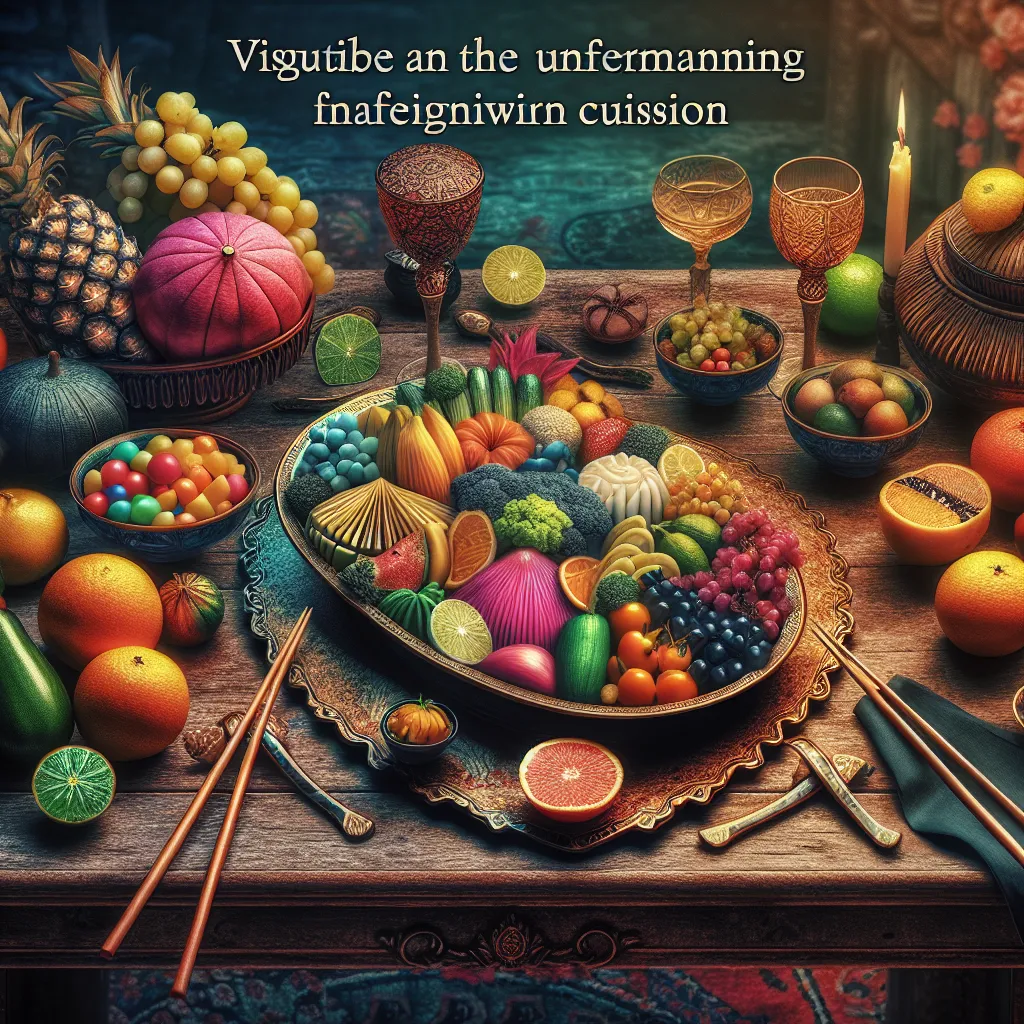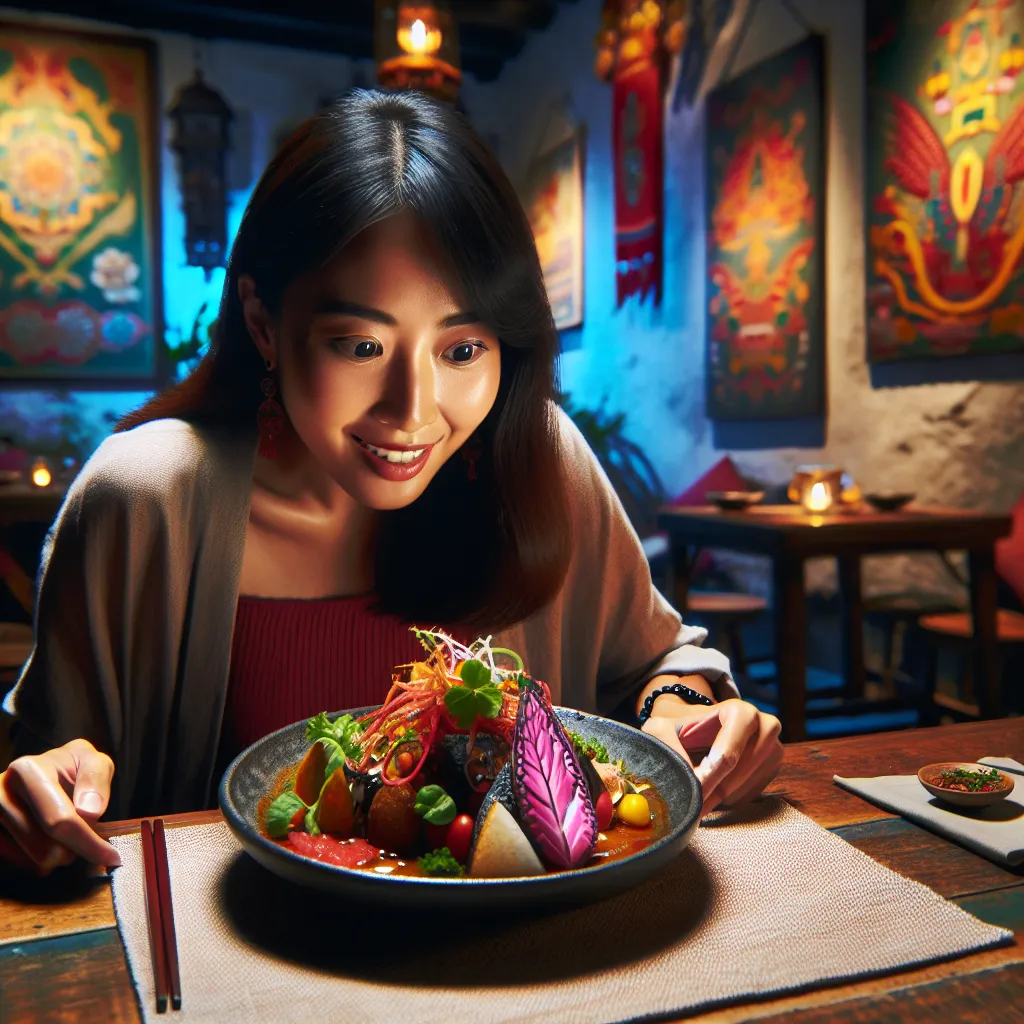The IELTS Speaking test is a crucial component of the IELTS exam, and one common topic that candidates may encounter is describing an unusual meal. This article will provide you with valuable insights and strategies to excel in this task, helping you achieve a high band score in your IELTS Speaking test.
Nội dung bài viết
- Understanding the Task
- Part 1: Introduction and Interview
- Question: Do you like trying new foods?
- Part 2: Long Turn
- Sample Answer (Band 8-9):
- Follow-up Questions:
- Part 3: Two-way Discussion
- Question: How do you think globalization has affected traditional cuisines around the world?
- Key Vocabulary and Phrases
- Examiner’s Advice
Understanding the Task
Before we dive into the specifics, it’s important to understand that the “Describe an unusual meal you had” topic could appear in any part of the IELTS Speaking test. However, it is most likely to be featured in Part 2, the long turn section. This task assesses your ability to speak at length about a personal experience, using appropriate vocabulary and grammatical structures.
 Unusual exotic meal
Unusual exotic meal
Part 1: Introduction and Interview
In Part 1, the examiner might ask you some general questions about food and eating habits. Here are some possible questions and sample answers:
Question: Do you like trying new foods?
Band 6-7 Answer:
Yes, I do enjoy trying new foods. It’s always exciting to taste different flavors and experience various cuisines. I think it’s a great way to learn about other cultures.
Band 8-9 Answer:
Absolutely! I’m quite the adventurous eater and relish the opportunity to expand my culinary horizons. Trying new foods is not just about satisfying my taste buds; it’s a gateway to understanding different cultures and their traditions. I find it fascinating how food can tell stories about a region’s history and way of life.
Part 2: Long Turn
Here’s a sample cue card for the “Describe an unusual meal you had” topic:
Describe an unusual meal you had
You should say:
- What the meal was
- Where you had it
- Who you were with
- And explain why you thought it was unusual
Sample Answer (Band 8-9):
I’d like to tell you about an extraordinarily unique meal I had during my trip to Japan last year. The meal in question was a traditional kaiseki dinner, which I experienced at a small, family-run ryokan in Kyoto.
I was traveling with my best friend, Sarah, who’s always been keen on immersing herself in local cultures. We decided to splurge on this particular dining experience as it came highly recommended by our guidebook.
What made this meal so unusual was its meticulous presentation and the sheer variety of dishes served. The kaiseki dinner consisted of about 12 to 15 small courses, each artfully arranged to represent the current season. The dishes were served on an array of beautiful ceramic plates, each one seeming like a miniature work of art.
One of the most unusual aspects was the inclusion of ingredients I’d never encountered before. For instance, there was a small dish of sea urchin served in its spiny shell, and another course featured sakura-flavored mochi, which had a subtle cherry blossom taste. The chef also presented us with a clear soup that had a single cherry blossom floating in it – it was almost too beautiful to eat!
What struck me as particularly unusual was the attention to detail in every aspect of the meal. The server explained the significance of each dish, including its ingredients and how they related to the season. It wasn’t just about eating; it was a cultural and educational experience.
The unusual nature of this meal wasn’t just in its unfamiliar ingredients or presentation, but in the entire philosophy behind it. It was a culinary journey that engaged all my senses and gave me a deeper appreciation for Japanese culture and its reverence for nature and seasons.
This kaiseki experience was far removed from my usual dining habits, making it truly stand out as an unusual and unforgettable meal.
Follow-up Questions:
- How did this unusual meal compare to your regular eating habits?
- Would you recommend this experience to others? Why or why not?
Band 8-9 Answers:
-
This kaiseki dinner was worlds apart from my regular eating habits. Normally, I’m accustomed to more casual dining experiences with larger portions and fewer courses. The kaiseki meal was a stark contrast in its formality, precision, and the contemplative approach to eating. It made me realize how rushed and often mindless my usual meals are in comparison. This experience has actually inspired me to be more mindful about what and how I eat, even in my day-to-day life.
-
I would wholeheartedly recommend this experience to others, particularly those who are open-minded about food and interested in culture. It’s not just a meal; it’s a window into Japanese aesthetics, philosophy, and culinary artistry. However, I would caution that it might not be suitable for picky eaters or those looking for large portions. It’s best appreciated by people who view food as an art form and are willing to step out of their comfort zone. The experience can be quite enlightening and might change one’s perspective on food and dining altogether.
Part 3: Two-way Discussion
In this part, the examiner might ask more abstract questions related to unusual meals and food culture. Here are some potential questions and sample answers:
Question: How do you think globalization has affected traditional cuisines around the world?
Band 6-7 Answer:
I think globalization has had a big impact on traditional cuisines. It’s made it easier for people to try foods from different countries. This is good because we can experience new tastes, but it might also mean that some traditional dishes are being forgotten.
Band 8-9 Answer:
Globalization has undeniably left its mark on traditional cuisines worldwide, resulting in both positive and negative consequences. On the one hand, it has facilitated cultural exchange through food, allowing people to experience diverse flavors and cooking techniques without leaving their home countries. This cross-pollination of culinary ideas has led to exciting fusion cuisines and innovative dishes.
However, there’s also a flip side to this culinary globalization. The homogenization of food culture poses a real threat to traditional cuisines. As international fast-food chains and global food trends gain traction, there’s a risk of local, traditional dishes being overshadowed or forgotten. This could lead to a loss of culinary heritage and the unique food identities that different cultures have developed over centuries.
That being said, I believe there’s also a growing counter-movement that seeks to preserve and celebrate traditional cuisines. Many chefs and food enthusiasts are working to revive ancient recipes and cooking methods, often giving them a modern twist. This balance between innovation and tradition is crucial in ensuring that while we embrace global flavors, we don’t lose the rich culinary heritage that makes each culture unique.
Key Vocabulary and Phrases
To achieve a high band score, it’s crucial to use a range of vocabulary accurately. Here are some key terms and phrases related to describing unusual meals:
-
Culinary adventure [kuhl-uh-ner-ee ad-ven-cher] (noun phrase): An experience of trying new and exciting foods.
Example: “Trying the kaiseki dinner was a true culinary adventure.” -
Gastronomic delight [gas-truh-nom-ik di-lahyt] (noun phrase): A food or meal that is extremely pleasing to the taste.
Example: “Each course of the meal was a gastronomic delight.” -
Epicurean [ep-i-kyoor-ee-uhn] (adjective): Devoted to the pursuit of sensual pleasure, especially to the enjoyment of good food and comfort.
Example: “The unusual meal satisfied even the most epicurean diners.” -
Palate [pal-it] (noun): A person’s appreciation of taste and flavor.
Example: “The unusual flavors challenged and expanded my palate.” -
Avant-garde cuisine [ah-vahnt-gahrd kwi-zeen] (noun phrase): Innovative or experimental cooking.
Example: “The chef specialized in avant-garde cuisine, creating unexpected flavor combinations.”
Examiner’s Advice
To excel in describing an unusual meal in your IELTS Speaking test:
-
Use descriptive language: Paint a vivid picture with your words. Describe colors, textures, and flavors in detail.
-
Show enthusiasm: Demonstrate genuine interest in the topic through your tone and expressions.
-
Structure your answer: Organize your thoughts logically, addressing all parts of the question.
-
Use a range of vocabulary: Incorporate food-related terms and idiomatic expressions naturally.
-
Reflect on the experience: Don’t just describe the meal; explain why it was unusual and how it impacted you.
-
Practice: Regularly describe meals and food experiences to friends or family to build confidence and fluency.
By following these strategies and using rich vocabulary, you’ll be well-prepared to tackle the “Describe an unusual meal you had” topic and other food-related questions in your IELTS Speaking test. Remember, the key is to speak naturally and confidently while showcasing your language skills.
For more tips on describing unique experiences, check out our guides on describing a person with a unique talent or describing a visit to a friend. These can help you develop your descriptive skills further, which are valuable across various IELTS Speaking topics.


